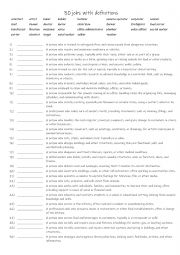
|
A1+-A2 30 jobs with definitions
Students write the name of the job being described. Answers on page 2.
Level: elementary
Age: 8-100
Type:
Downloads: 113
|
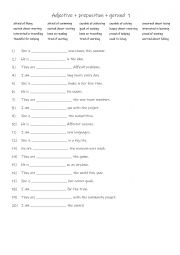
|
Adjective + preposition + gerund 1
Learning adjective + preposition + gerund is essential for natural and fluent English. These structures are common in everyday speech, writing, and exams. They help express ideas accurately, but since prepositions don�t always follow logical rules, mastering them prevents common mistakes and improves overall communication.
Level: intermediate
Age: 10-100
Type:
Downloads: 113
|
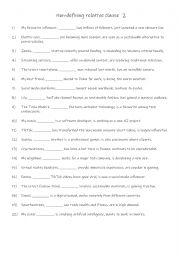
|
Non-defining relative clause 2
Students complete the gap-fill with the correct word. Answers on page 2.
Level: elementary
Age: 10-100
Type:
Downloads: 113
|
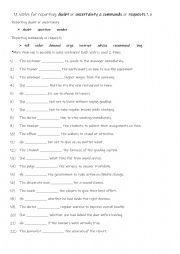
|
11 verbs for reporting doubt or uncertainty & commands or requests 1a
First, students need to familiarise themselves with the 11 verbs and check their meaning. Then they read the sentences to see which one is needed to complete the sentence. Each word is used 2 times! Answers on page 2.
Level: elementary
Age: 9-100
Type:
Downloads: 113
|
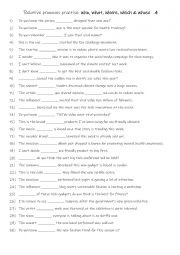
|
A1+-A2 Relative pronouns practise who, what, where, which & whose 4
Mastery of these pronouns also builds grammatical accuracy, making students more confident in formal and informal contexts. First, students need to familiarise themselves with the pronouns and their use. Then they read the sentences to see which one is needed to complete the sentence. Answers on page 2.
Level: elementary
Age: 8-100
Type:
Downloads: 113
|
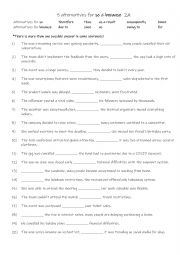
|
5 alternatives for both so & because 2A
First, students need to familiarise themselves with the 10 words and check their meaning and use. Then they read the sentences to see which one is needed to complete the sentence. Each word is used 2 times! Answers on page 2.
Level: elementary
Age: 9-100
Type:
Downloads: 113
|
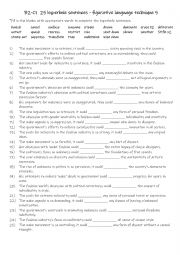
|
B2-C1 25 hyperbole sentences- figurative language technique 5
Recognising and using hyperbole sharpens analytical thinking, as students learn to interpret exaggerated expressions in context. Overall, mastering this figurative language technique makes both written and spoken communication more compelling and expressive. First, students need to familiarise themselves with the 25 words and their meaning. Then th...
Level: intermediate
Age: 12-100
Type:
Downloads: 113
|
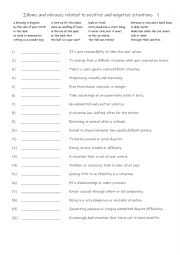
|
Idioms and phrases related to positive and negative situations 1
First, students need to familiarise themselves with the 20 idioms and expressions and their meanings. Then they read the definitions to see which one is being described and write that word in the space provided Answers on page 2.
Level: intermediate
Age: 13-100
Type:
Downloads: 113
|
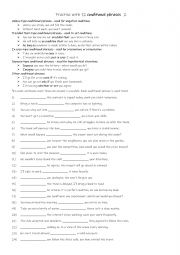
|
B1 Practise with 12 conditional phrases 2
First, students need to familiarise themselves with the 12 conditional phrases and their meanings and use. Then they read the sentences to see which one is suitable to complete the gap-fill. Each conditional phrase is used 2 times! Answers on page 2.
Level: intermediate
Age: 11-100
Type:
Downloads: 113
|
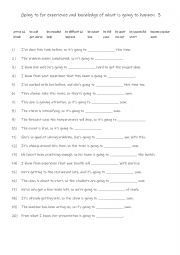
|
Going to for experience and knowledge of what is going to happen 3
First, students need to familiarise themselves with the verbs and their meanings. Then they read the sentences to see which one is required to complete the sentence. Answers on page 2.
Level: elementary
Age: 9-100
Type: worksheet
Downloads: 113
|












